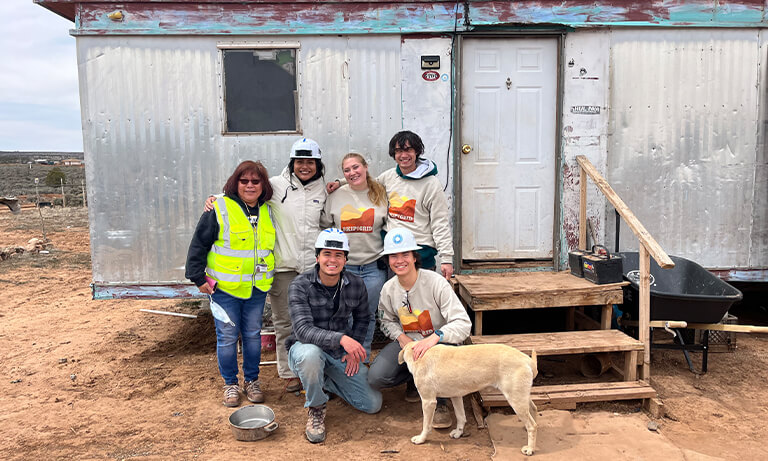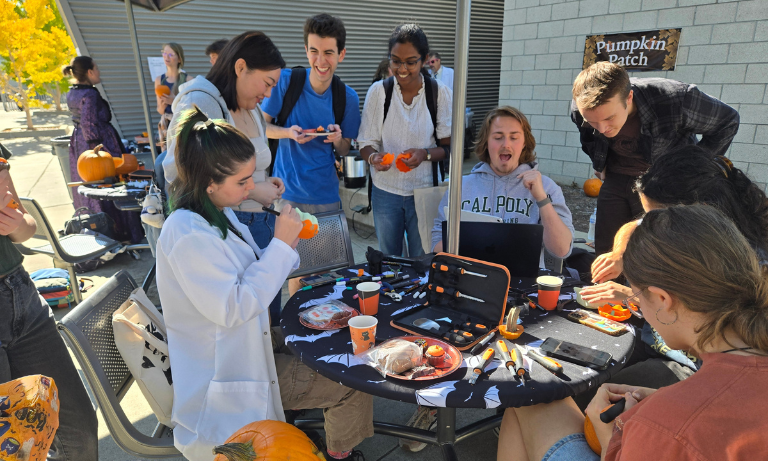Mechanical engineering senior Liam Drew hadn’t truly grasped the concept of life without light until a spring break trip to the Navajo Nation where close to 40% of homes have no access to electricity.
He watched a young girl study with a camping lantern as her only light source, and families turn to generators and expensive gasoline to heat their small homes when temperatures dipped in the desert landscape of the Four Corners region of Colorado, Utah, Arizona and New Mexico.
“There’s no way to gain a sense of what it is to live without light until you experience it firsthand,” said Drew, who grew up in Oceanside, California.
He joined a group of 20 Cal Poly students – including eight from the College of Engineering – and representatives from education foundation Heart of America and solar contractor SOLV Energy to provide Navajo families with clean electricity, battery storage and light.
Skip the Grid project partners installed solar-powered systems for 27 Navajo homes in three days.
“You could feel the excitement when we were installing a system,” Drew said. “Learn by Doing is about learning skills in the classroom but also about going into communities and experiencing some of the issues they face.”
On their mission to bring light to families, Drew and his teammates gained a new understanding of energy inequality in disadvantaged regions that is strengthening their resolve to use their education for good.
“I know I’m heading down the right route if in my career I can stay involved in projects like these,” Drew said. “I realize that I need to give back more.”
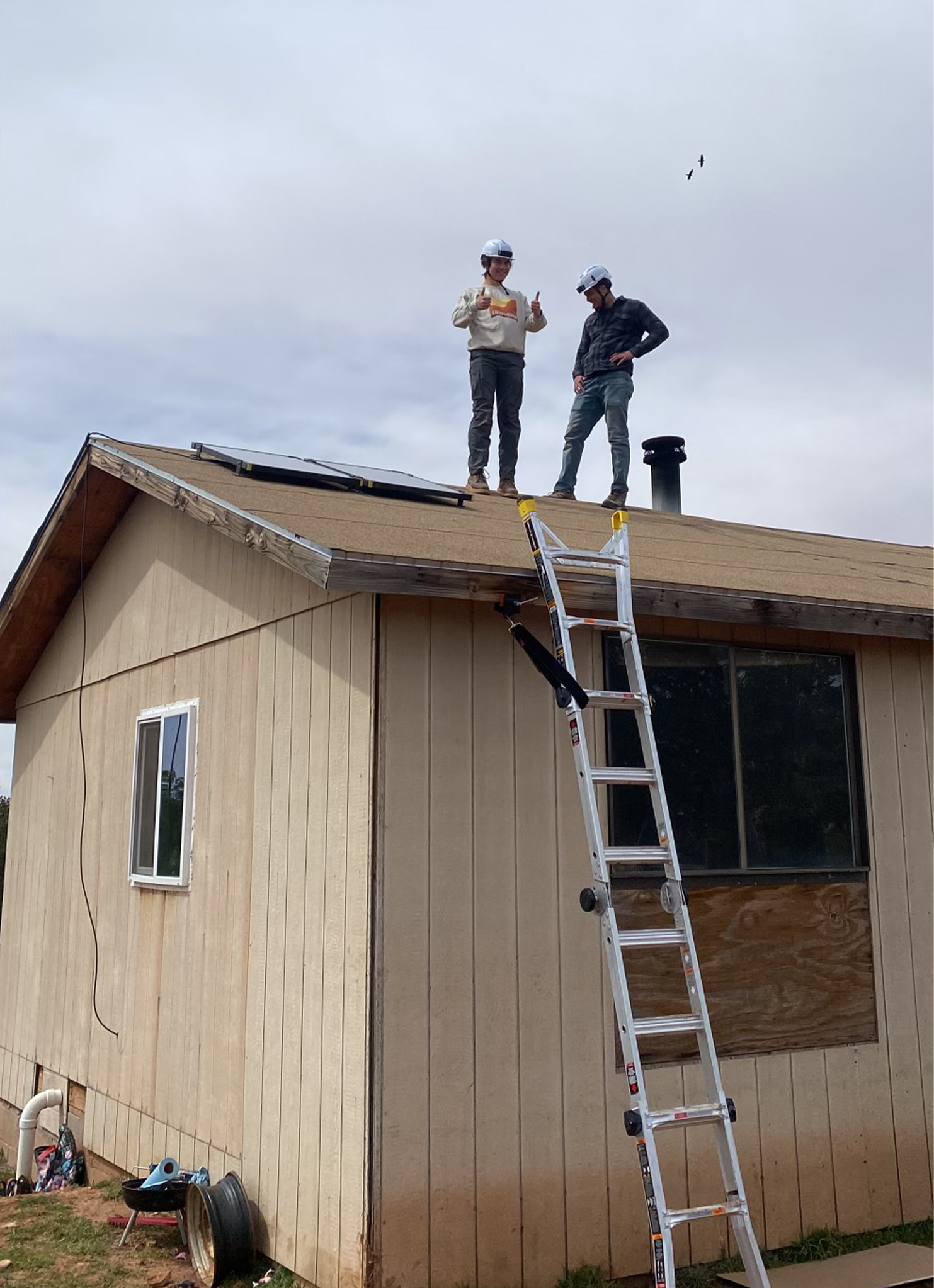
Sharing a Common Goal
Nine students and three professors joined the Skip the Grid project in spring break 2022, installing solar panels and supplying 11 families with power.
The group brought back valuable lessons and compelling narratives from their time in the Navajo Nation along with momentum that carried into planning a return in 2023.
“When you put together a bunch of people with a common goal, the energy that comes out of it is impressive,” said Mechanical Engineering Professor Jacques Belanger, who along with professors Joseph Clearly and Jeong Woo of Construction Management, went on both trips. “It’s rewarding to do something for the Navajo Nation and to see students in that environment work together.”
This year’s group of 20 students, mainly in their third year, represented majors across campus: mechanical and environmental engineering, applied mathematics, architecture, construction management, economics, Spanish and graphic communication.
“We had a more diverse group this time,” Belanger said, “and we were better prepared and more efficient.”
Prior to departure, members practiced installing solar panels on Cal Poly’s construction management buildings, completed cultural sensitivity training and learned about the significance of the reservation.
The Navajo Nation is the largest reservation in the United States with its 16 million acres but due to historical injustices is one of the poorest, with almost 40% of households with incomes below the federal poverty threshold.
“Students put Learn by Doing into action on this trip and made an impact,” Belanger said. “It’s a powerful feeling to see the faces of the people they end up helping.”
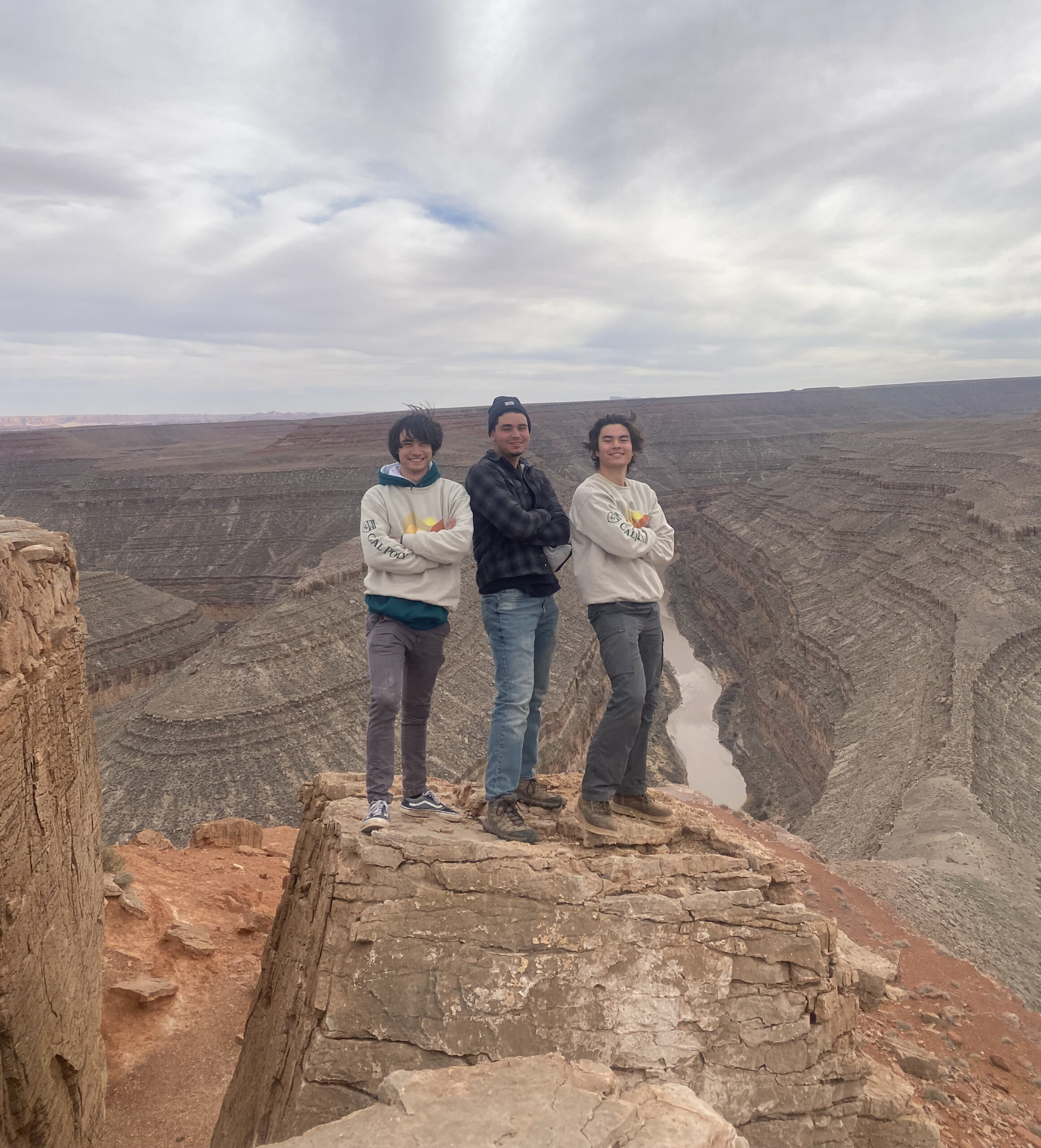
Addressing Energy Inequity
Diana Santos had visited tourist sites in Arizona while growing up in Burbank, California, but was taken aback by what she found on the reservation.
“For five years, I lived in the developing country of Guatemala, where my Indigenous grandma had spent her whole life,” she said. “I saw correlations between my grandma’s experience and life on the reservation, and I got very emotional. There is a need right here, not just in developing countries.”
The first-generation college student joined Drew’s team as the only environmental engineering major on the project. She was in charge of deciding where the solar panels would be most efficient, then installing them on the roof with construction management student Julian Chavez.
They traveled in four-wheel drive trucks loaded with equipment as a Navajo Nation liaison used coordinates to find the homes that had been identified by Red Mesa School District officials as those without transmitted power. The average drive between homes was about 30 miles.
During one installation, two young schoolchildren arrived home as Santos and Chavez installed panels on their roof, tumbling out of the car giggling as they raced to play on the trampoline.
“Their laughs were so contagious; it’s a core memory for me,” Santos said. “In the middle of nowhere, these four solar panels will give these kids energy and light, bringing them more comfort and happiness.”
While Santos was on the roof, Drew was inside the homes that often had just one room figuring out the best spot for the battery and lights. He explained the system to families with help from their liaison who translated for the group.
Drew also served as the project’s education lead, helping host the first Education Day for 400 children in Red Mesa Schools. He joined mechanical engineering students Zoey Camarillo and Raul Espinoza and Spanish major Alejandro Martinez, along with SOLV Energy and Heart of America officials, to give presentations in the K-12 classrooms about solar power. Students then built their own mini solar cars.
“There is an education inequity tied to energy inequity and we wanted to address a little bit of that by supplying lessons, materials and cars. We shed some light on the installed systems so students weren’t left in the dark,” said Drew, chuckling at his choice of words.
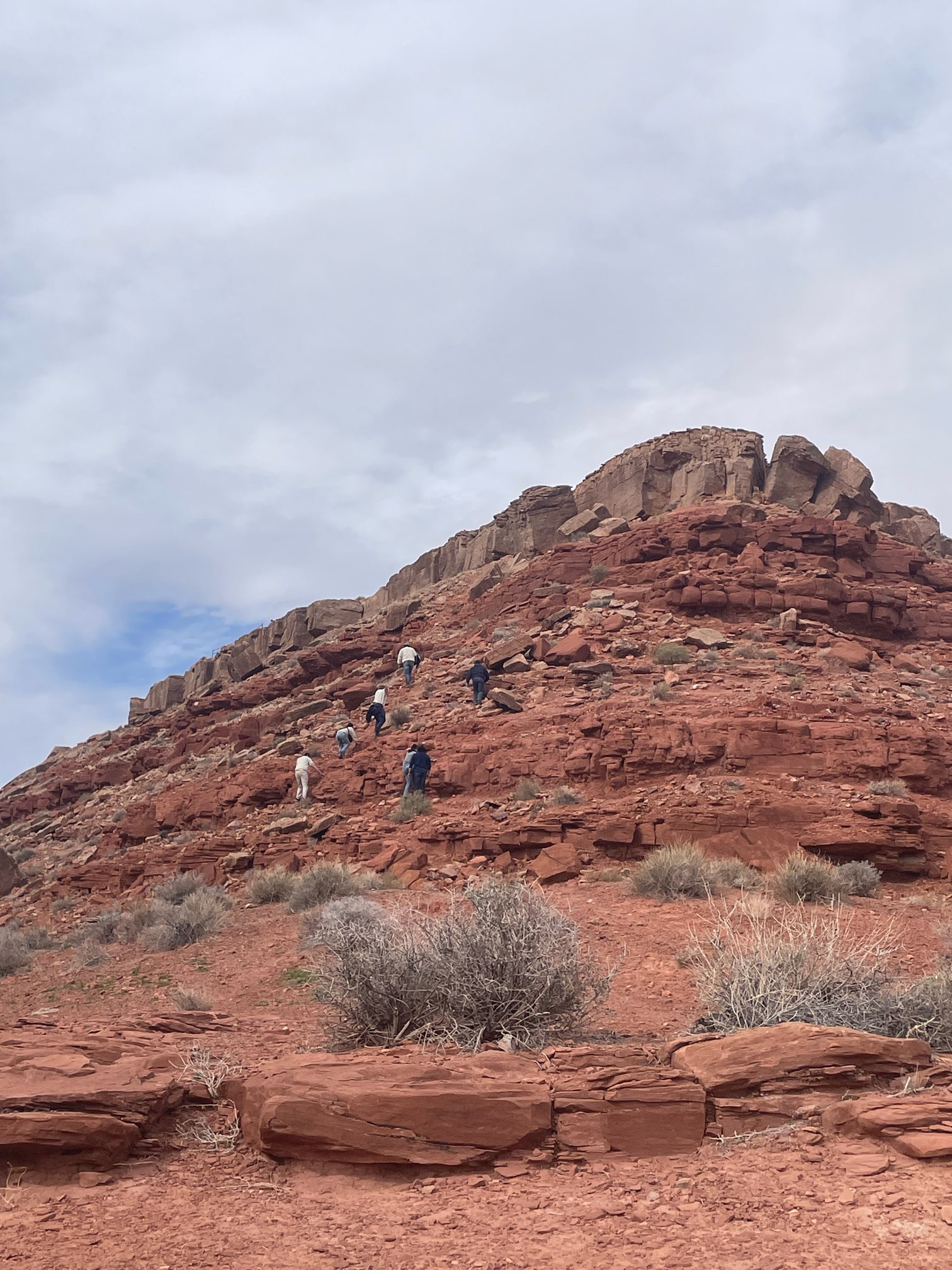
Staying the Course
The trip left an indelible impression on Drew and Santos, cementing their career goals and lifelong friendships.
“I have a new perspective on lower income communities right here in the U.S.,” Santos said. “We were all inspired after seeing the difference that we made.”
She will be the first in her family to graduate this summer and hopes to use her engineering major and architecture minor to link up with an organization providing clean water to remote areas such as the Navajo Nation.
Drew will intern with SOLV Energy this summer after making a connection with a presenter during Education Day. He hopes to stay involved with Skip the Grid next year as he looks toward a career in renewable energy.
The teammates said their group has remained close after bonding during long car rides where they exchanged music and shared stories.
“Whenever I see them on campus, it makes me happy,” Santos said. “I have a love for all of them, and they will forever be ingrained in my mind.”
The level of interest is still sky-high for the project, with organizers now considering two annual trips, according to Belanger.
By Emily Slater

